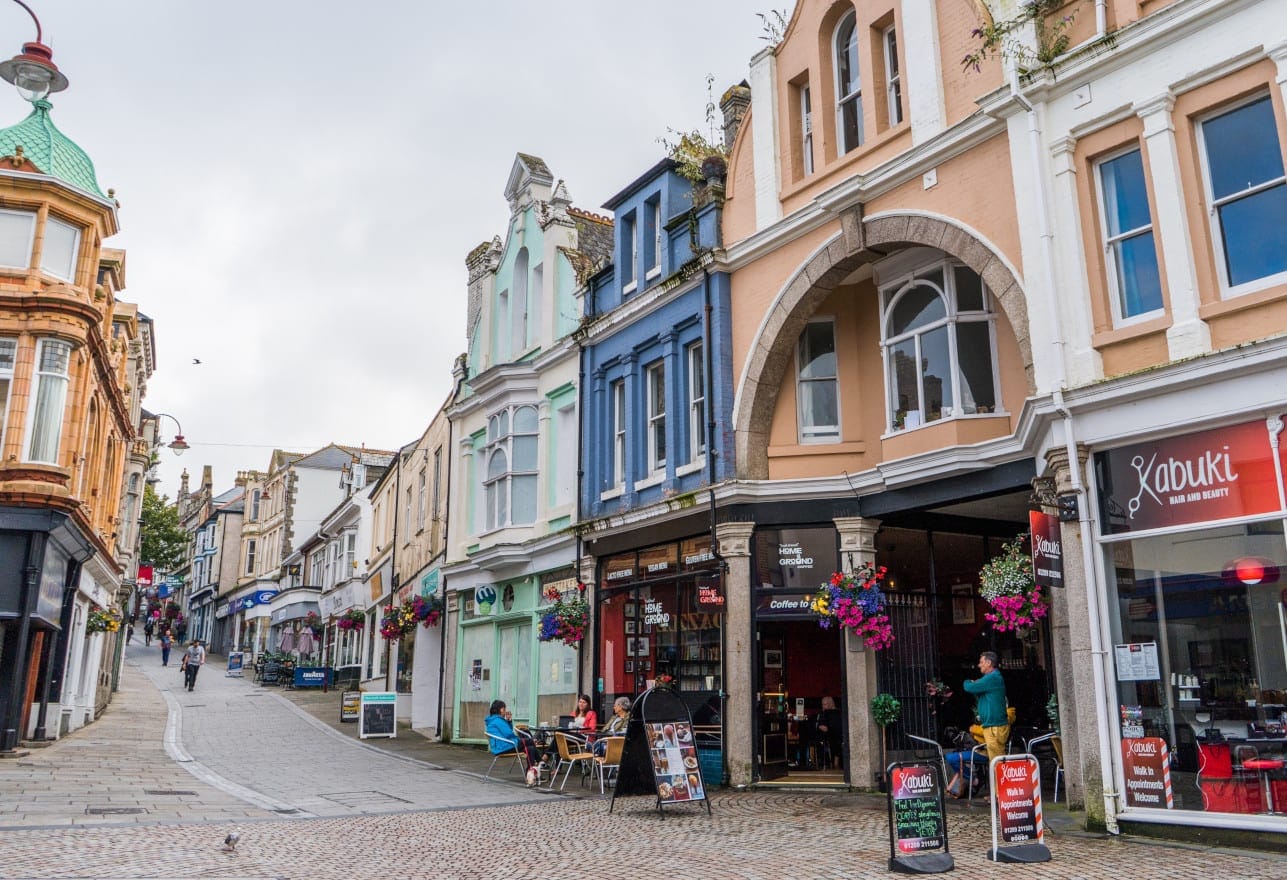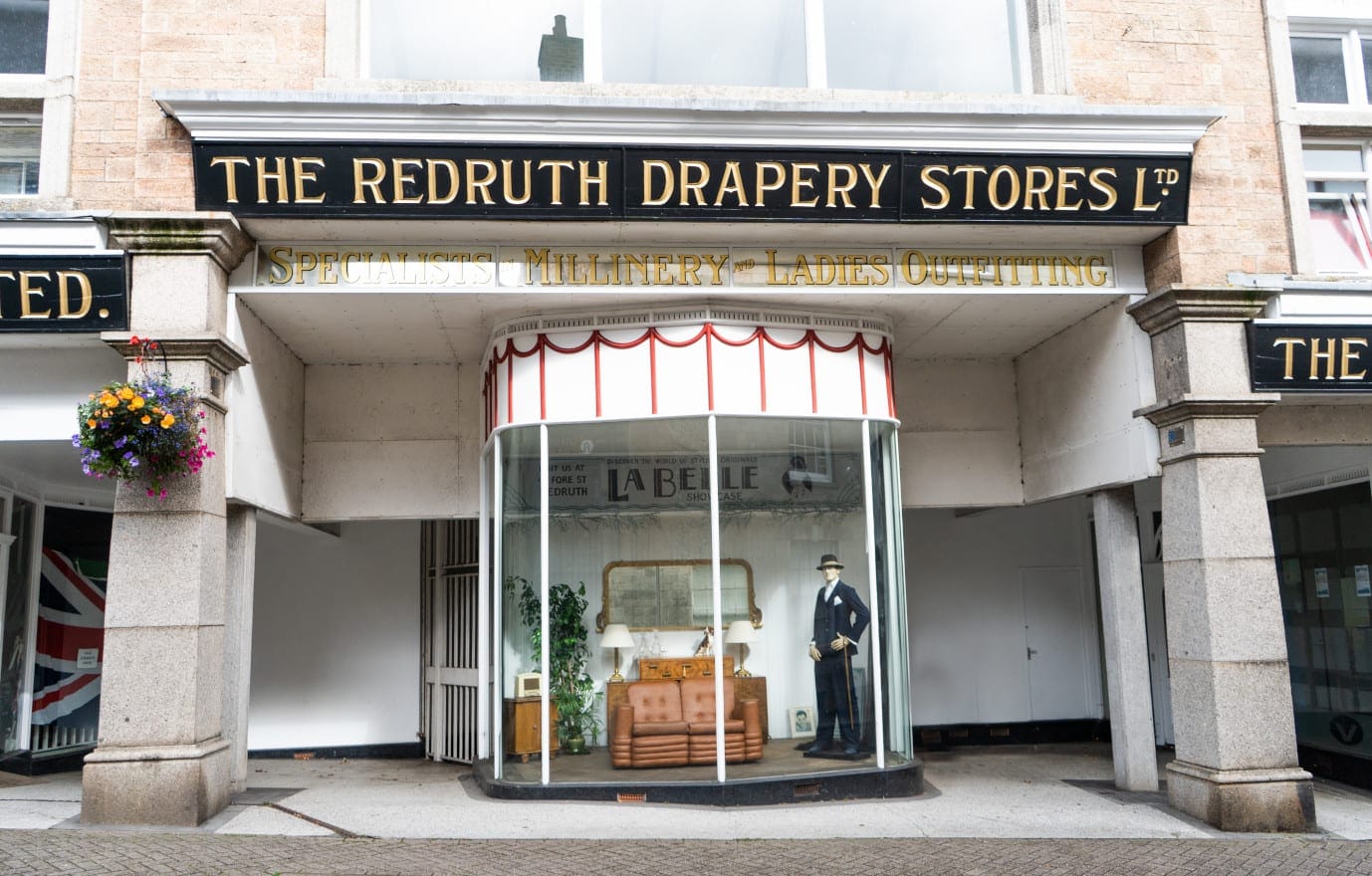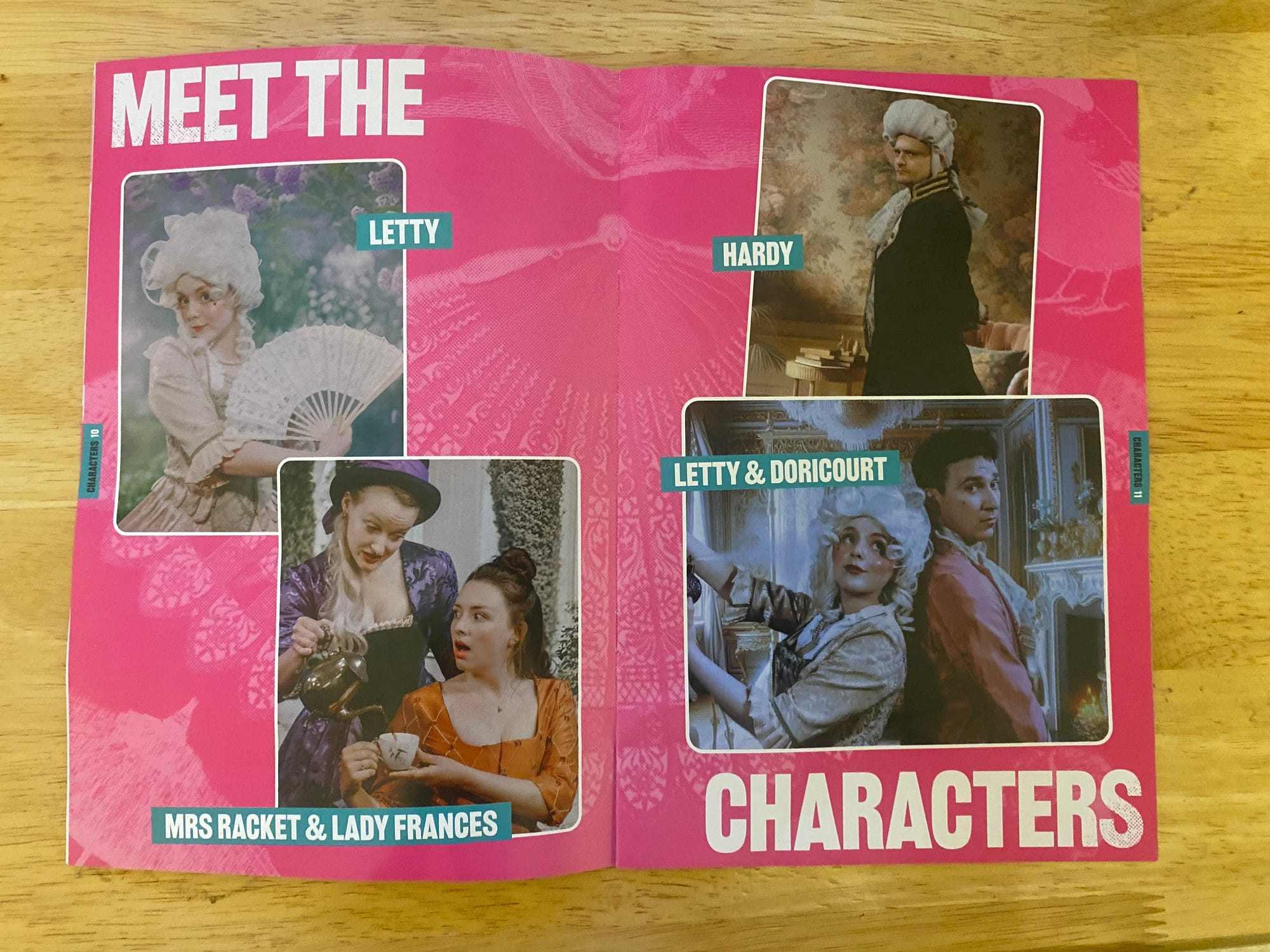
"I invite you to join me, as I travel from London to my hometown, Redruth, in Cornwall, taking the iconic Cornish Riviera Express train to explore the secret local, slow and organic cultural and foodie hot spots", writes poet and musician, Sibyl Cooper.
The city of London is uncompromising in draining your energy.
Your favourite slow locations, bubbles of connection with community, nature and the arts, could be just a few hour’s journey away.
Whilst packed on the tube, have you ever wondered if there is an alternative?
A way of experiencing unique cultural perspectives at a slow pace?
After moving to London in January of 2023, my visits to Redruth have always brought me joy. The town is my safe haven from the cosmopolitan pressures of the film world, career, the constant blazing lights of dark techno-parties and opportunity.
My Slow Journey Back to Joy
A gleaming door opens, and another and another. I feel my body split apart, each piece scrambling at chance, collecting scattered pearls on ice.
When my Great Western Railways train leaves Paddington, the view from my window gradually de-industrialises itself. We peel through the zones of London and reach Reading.
I feel liminal on this part of the journey, not having explored Reading and the surrounding areas of farmland. The occasional manor house looms in the distance.
Upon seeing the Westbury White Horse I feel more at ease. This oddity is believed to mark the victory of King Alfred over the Danes in the Battle of Eddington, 872 AD. This figure is carved out of chalk beneath the Iron Age hilltop fort of Bratton Camp and is believed to be over 300 years ago.
The White Horse at Westbury Gallops Beside the Train
I imagine the stallion galloping alongside our train. He guides us through the West Country all through Exeter to the Rivera Lane. As we pass Dawlish, the tracks skirt along the coastline. The Westbury Horse becomes seafoam, galloping to shore in a wave. He becomes one with the blue.
Rivera Lane holds one of the most iconic views on the British Railways. The tracks connect Exeter St Davis to the resort towns, Paignton and Torquay. The Lane allows the London to Penzance service to pass through its twelve stop seaside route and jet off on its own path between Newton Abbot and Torre.
Rivera Lane from a GWR Train Window
At this moment I feel closer to home. The Celtic hills drum with green.
My favourite part of the journey is crossing the River Tamar via the Brunel Bridge. Constructed in 1859 by Isambard Kingdom Brunel; the connection between Plymouth and Saltash can be traversed with ease.
With a cylindrical structure atop the bridge, I would wonder as a child if dragonic serpents would travel in this hollow tunnel, slithering above our heads.
The River Tamar separates the counties of Devon and Cornwall, and is always dotted with boats no matter the tide. They float like little flecks of paint on the blue, sails quivering in the wind.

On the Cornish side of the River, the town of Saltash nestles. Quaint cottages and harbourside pubs, each built in the tradition of their age radiate a warmth from their brownstone exteriors, and from the Two Bridges pub pours the scent of fish and chips, and freshly poured cask ale.
Further back from the water’s edge lie new build houses. Their designs are minimalist, white walled, open plan spaces usually with bay doors that open to a concrete raised patio. You’d see these sort of builds in Hollywood Hills.
They seem to make a conscious effort to elevate themselves above the local community, from the bustle of the local towns. As I pass them, they seem like black marbles discarded in tall grass.
With the Tamar behind us, we rush deeper into the Cornish landscape, past the old mining towns of Bodmin and St Austell, past the gentle stream and old trainhouses of Lostwithiel.
When we pull into Truro, the cathedral stands tall above our county’s only city. The window at her heart is a stained glass flower.
My pulse rests when I step off the platform at Redruth station.
Dynnargh dhywgh e Redruth "Welcome to Redruth"

Redruth is often overlooked by tourists visiting the county. Once one of the richest towns during the days of the British Empire, its rich reserves of tin and copper made it one of Cornwall’s beating hearts, an epicentre of trade and cultural exchange.
As I grew up in the town, and as the age of the internet spread its wings, they eclipsed the local shops along Redruth high street. One by one they began to close down as shopping at superstores and online became the norm. The once bustling strip was stitched together with wooden panels on abandoned shops.
After the lockdown laws were lifted in 2021, a resurgence began in Redruth, with vintage stores like Daisy Rain, Make-a-Mends, and Rust, along with galleries like Mining Exchange Studios and Alma Galleries have brought colour and activity back to the town.
Erupting from the shell of the burnt down Redruth Brury now stands Kresen Kernow, making the town the centre of Cornish archives and research. Combining the Cornish Studies Library and Truro Record Office, the facility holds the largest collection of Cornish archive material in the country.
A place of learning and culture, the local school communities regularly visit to learn more about county history, and free culture events, performances, plays, and poetry readings now take place on this once derelict site.
Find out more about Kresen Kernow HERE
Just outside of the town centre and behind is the Beats and Roots cafe. It sits behind The Ladder creative arts space, the building formerly the iconic Passmore Edwards library. It is wonderful to see the library, a core part of generations of childhoods in Redruth being repurposed after closing down in 2019.
This charming organic food spot serves a range of food from around the world, the menu regularly changing specials menu sure to keep you on your toes. Upon visiting, I tried their Mezze dish, built from luscious couscous and chickpeas, along with tender roasted aubergine.
When you walk out of Redruth towards the neighbouring town of Lanner, long time home of electronic music and IDM pioneer, Aphex Twin, you can dart left up towards the iconic Carn Marth.
Our highest spot, standing by the trig point over the quarry atop the hill, the coastlines along Falmouth and Portreath can be seen, the oceans crashing against the stark cliffs.
I often visit Carn Marth on misty days, the haze obscuring the pathways and wetting the corncockles, bursting with violet.
Carn means “Rocky Hill” or “Tor” in the Cornish language, and “Marth” meaning “Wonder” or “Astonishment”.
Other scholars of Cornish history believe that the name is translated from “Mark’s Tor”, named after the 6th century dark age King, King Mark.
He was alleged to be King of the Damnoni people of Dumnonia, a territory spanning from Exeter to Carn Marth. This hilltop marked the boundary between Dumnonia and the Carnabians of Redruth - Carnabians territory encompassing all of the southward settlements in the county.
Many conflicts occurred between the two Celtic tribes, with the Damnoni people eventually defeating the Carnabians and uniting the South West from Exeter to Lands End. This greatly limited the impact of Roman colonisation on Cornwall.

Some say King Mark is buried somewhere on Carn Marth. His bones hum ancient hymns of the Celtic days.
A Roman road was eventually constructed between Launston and St Michael’s Mount in south Cornwall, and archeological evidence shows this road to have run over Carn Marth.
Want to learn more about Cornish History and the Cornish language? Check out Kresen Kernow's Cornish language lessons HERE
The Miracle Theatre's Love Riot at Carn Marth Ampitheatre
As I traversed my way through the country lanes up to the summit of Carn Marth, I followed the winding path, this relic of a Roman road, and darted left into Carn Marth Amphitheatre.
Now under the watchful gaze of the Carn Math Protection Society, the amphitheatre was once an active quarry that excavated granite. The amphitheatre’s stark cliff face looms over the audience seating.
Chiselled into a soft hillside, five rows of seating is covered in grass and small tufts of heather, with steps dividing the seats down the middle, allowing access for the performers to enter the stage.
The atmosphere was warm on this summer evening, conversation between families hummed as the groups drank wine and hot chocolate.
The audience were here to see the Miracle Theatre show Love Riot, an adaptation of Hannah Cowely’s 1780 play, Belle’s Stratagem.
An immensely popular comedy of manners in its day, writer Hannah Mulder and director of the Miracle Theatre, Sally Crooks, have adapted the play, synthesising its core themes of mistaken identity and masks of Georgian courtship, and significantly pruning back its cast of characters.
Separated by a tear thin stream is the stage space, where a set by Al Munden was constructed.
The Miracle Theatre are celebrating their 45th anniversary with Love Riot.
Bringing Theatre to the Community
Miracle thrives when bringing theatre to outdoor locations, bringing theatre to the community rather than community to the theatre. This greatly benefits the minimal sets for their outdoor shows, where the copper plating and wooden steps.
Munden’s design was used as a manor house, an eccentric costume shop on Drury Lane, and a coffee house. A vignette, I felt the cast fade in and out of their time and space, on a street in London whilst amidst the reclaimed green of the quarry.
With a cast of five playing eight characters, the costume changes and moments of mistaken identity were effective in exaggerating the comedic moments in the script.

Sophia Dear, Charlotte Merriam and Milly Montgomery-Smith gave enticing performances with heart. It was clear a great deal of respect and immersion was imbued into their characters, exhausting the comedic moments and nuances in their dialogue.
Danny Melor and Daniel Richards, the former playing two parts and the latter three, showcased a dynamic range and mastery of their craft.
Melor, playing the stoic gentleman Doricourt and the eccentric, likely homosexual, costume extraordinaire Flutter, allowed for themes of hidden sexuality to be explored.
When Flutter is on stage, Doricourt must be elsewhere. The love story cannot develop between Doricourt and Letty (Milly Montgomery-Smith) before the audience, and Flutter is excluded from the heterosexual world of courtship and romance. You may find him in the Molly House.
See Miracle Theatre’s tour dates and upcoming shows HERE
Behind the Mask: Dan Richards Talks Theatre and Modern Cornwall
I spoke with Dan Richards virtually after the show to discuss his captivating performance as Sir George Touchwood, Hardy, and Courtall.
Each character demanded a different aspect of Dan to curate - particularly evident in the dichotomy between Hardy, a bumbling, snooty entomologist, and Courtall, the sex-pest rake.
His favourite role to play in this show was Courtall. He didn’t feel the character come alive in rehearsals, but when placed before an audience, he was able to dive into the character.
Courtall thrives in front of a crowd, he needs to flourish his plumes of passion and meddling, and be observed. This collaboration between actor and audience is at the heart of the Miracle Theatre’s approach, and this has bled into Dan’s approach to characterisation.
Dan is a seasoned regular in Miracle productions, working with the company for the last ten years.
At aged 16, he established the company Neater Theatre which hosts Christmas shows each winter, and then went on to establish ‘Owdyado Theatre - with long-time collaborator Charlotte Blister - of which he is artistic director.
A View from the Edge (Trailer) - Written and Produced by Dan Richards and Charlotte Blister
I was curious to ask Dan about the theatre scene in Cornwall. The county has the largest number of theatre groups in the UK, and a sense of camaraderie exists between the groups. I feel that this lack of ego is a hard value to find within metropolitain performance scenes.
C0rnish Arts Struggling for Funding
The main struggle Dan and other creatives in Cornwall have found is the lack of funding available to the creative industries - long gone are the days of New Labour and extensive Arts Council funding.
The shows from new companies, in order to receive funding, almost always have to have a theme of traditional Cornwall present, a part of the “golden age” of Cornish heritage. There seems to be a demand to promote the old perspective of Cornwall, a ghost stuck in the mining age, which doesn't reflect the experiences of modern day Cornish communities.
Actors, writers, and other creatives like Dan are pushing back against this narrative.
Wrongdoings - Written and Produced by Dan Richards and Charlotte Blister
He is working on various scripts about modern Cornwall that wrestle with the idea of Cornwall as a living, breathing entity versus Cornwall as a tourist destination. He writes about the artistic communities, the divide between rich and poor folks, and the ever present rave culture hidden deep in the forests and moors.
If you are looking for a story about modern Cornwall, Dan recommends Wild Works Theatre’s show, Kneebone Cadillac. He described the production as: “Set in St. Day, a Cornish woman battles with the ghost of her dead father to enter a banger race, whilst her family faces threats from drug lords outside of the county.”
It sounds exhilarating.
Check out Wild Works Theatre Here
‘Strange Beasts’ - Running from September 18th 2024 - 6th of October 2024
Slow Travel Secret Map and Well Water Reflections
As my time in Redruth came to an end, I had to visit one of my favourite spots, Figgy Dowdy’s Well.
I had to rely on instinct and information from Cornish books to find the well the first time I visited alone. After many years apart from the well, the place seemed lost to me. But through much effort and many nettle stings, I found it.
I will share its location with those brave enough to explore:
- As you walk down the pathway from the Amphitheatre towards the Pennance Consols engine house, look out for the first tree on the left, peaking over the shrubbery and nettles. Its bark sprouts from the well’s secret reserve.
- The indentations of a nail-thin pathway can be seen peeking out through the bushes. Crush the nettles and brambles and head towards the treetop leaves.
- You will see a slight incline in the path, and feel five stone steps below your feet. Traverse these obscured stairs with caution.
- Following the path, you will feel under the earth, in a hidden den with a cathedral ceiling of bark and leaves.
Figgy Dowdy’s well will be here, pouring a gentle stream of fresh water from a stone opening behind a steel gate.
In a generational tradition, last recorded in 1929, young girls would take their dolls down to the well and baptise them in the stream.
I dip my fingertips into the stream and say a prayer to my ancestors.
The skin on my fingers feels soft as I board my train back to London.
I return to the metropolis refreshed, my senses arisen, and my head clear.
I encourage travellers to visit Redruth, Carn Marth, and other forgotten gems of Cornwall.
Engage with local communities and local arts, be respectful of tradition, and absorb the world at a slow pace - with a steady drum beat.
Oh, and I now hear the young girls singing as they once would on the hill:
“Figgy Dowdy had a well,
On the top of Carn Marth hill,
And she locked it night and day,
Lest they took her water away.”
A Local Cornish Slow Directory
If you want to take a slow trip to Southern Cornwall, you should explore the following beautiful locations, arts projects, and local businesses.
Beautiful Locations:
Cornwall Beaver Project Woodland Valley Farm
Restaurants and Cafes:
Carn Brea Castle Restaurant - Carnkie, Redruth, TR16 6SL
Culture Restaurant - 38B Arwenack St, Falmouth TR11 3JF
Restaurant MINE - 59 Marchmont St, London WC1N 1AP
The Orange Cafe Bar - Parade Hill, Mousehole, Penzance TR19 6PN
Local Organic Businesses:
Cornish Health Store - 3 Bond St, Redruth, TR15 2QA
Churchtown Veg & Wholefoods - 21 Churchtown, Saint Agnes, TR5 0QW
Richards 0f Cornwall Farm Shop - Carwin Rise, Loggans, Hayle TR27 5DG
Arts and Culture Spaces:
Crowji Arts Space - West Park, Redruth, TR15 3AJ
The Poly Theatre - 24 Church St, Falmouth, TR11 3EG
Fish Factory Arts Space - The Sail Loft (Ground Floor), Commercial Road, Penryn, TR10 8AG
Written and Researched by By Contributing Writer Sibyl Cooper. Copyright Sibyl Cooper/ The Luminaries Magazine. Edited By Alison Jane Reid. Copyright August 2024. All Rights Reserved. No Copying in any format including AI Whatsoever.






